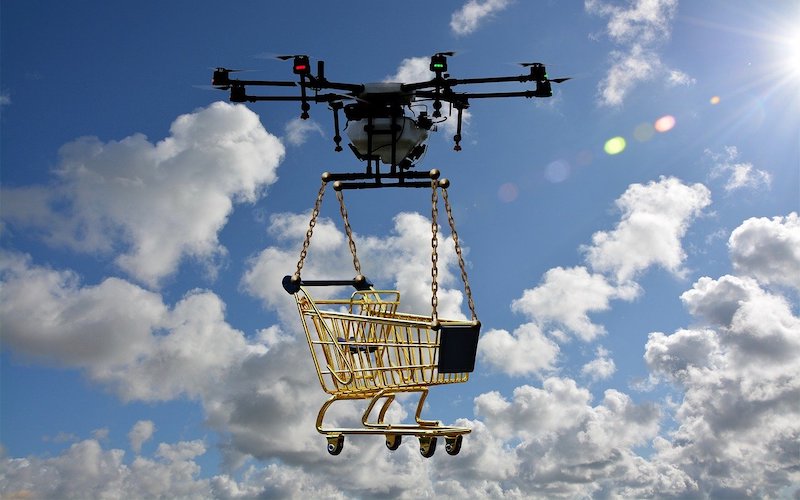Any global crisis will put new and unexpected strain on the food supply chain. While this often means serious inefficiency — food that’s destined for stores is wasted while consumers and food banks contend with empty shelves — the strain can also fast-track new technology and supply chain methods. In some cases, this new tech may even make the supply chain a lot more efficient and safer overall.
Here are four ways that technology is helping the food supply chain during COVID-19, as well as the possible impacts beyond the current crisis.
Related: These Startups Are Helping in the Fight Against Coronavirus
1. Delivery Drones
When it may not be safe to go to the grocery store, your options for buying food are limited. Grocery delivery services exist but may be somewhat unsafe for the elderly or those with pre-existing conditions. The safest service for many will be one where no human delivers the food — like grocery delivery services that use drones to bring the food directly to you.
Delivery drones aren’t new, but their adoption is being sped up by the current crisis. An Irish drone delivery service has recently started using the tech to deliver prescriptions and has plans to start delivering food after a trial period.
Alphabet’s drone company, Wing, has also reported a significant uptick in service usage as customers call on drones to fly out goods like pasta and baby formula.
A number of other companies — including medical drone delivery company Zipline — are already beginning to launch sooner than expected in light of the current crisis.
2. Blockchain
Some of the blockchain networks used in the food supply chain may soon help make it even more efficient.
Blockchain — a kind of secure, anonymized digital ledger technology — can be used by logistics companies to log and track shipments, potentially simplifying the administrative side of distribution.
Blockchain could also be used to boost supply chain transparency and increase customer confidence. One application of blockchain — IBM’s Food Trust technology — is designed to help improve food visibility through the supply chain.
With this tech in place, that distributors, vendors, and suppliers at every step of the process can know where the particular item they’re handling comes from and whose hands it has passed through to reach them.
3. Urban Farming Technology
Consumers are also finding ways to supplement the food supply chain with home-grown food.
According to a report from the World Economic Forum, urban farming is flourishing during the current outbreak as people with more free time are finding ways to reduce their dependency on trips to the store and occupy themselves. These farmers are creating home garden setups using tools like grow lights or by creating rooftop planters.
While the produce created by urban farmers won’t be available right away, it could provide a valuable supplement to the existing food supply chain and make customers less reliant on produce imported from around the country.
4. The Rise of Online Food Marketplaces
Online food shopping is also becoming more popular as consumers try to cut back on supermarket trips. Food marketplaces that make a point of tackling food waste — which has exploded in the past few weeks — are among those who have seen the biggest surge in interest.
FoodMaven is an online food marketplace that sells “imperfect” food to businesses — that is, food that’s oddly shaped but still perfectly edible. Restaurants and grocery stores typically skip over imperfect food in favor of more aesthetically appealing items — one of the reasons that the U.S. generates so much food waste on average.
Now, as restaurants shutter and consumer demand for fresh produce rises, FoodMaven is redirecting its online platform and selling directly to consumers. According to Ben Deda, CEO of FoodMaven, the change hasn’t been too hard to implement.
Many consumers, who are cooking regularly for their entire homes, are buying in bulk and freezing or giving away what they don’t need.
How New Technology is Changing the Supply Chain During COVID-19
The current coronavirus outbreak is putting serious stress on the food supply chain. While this is generating a lot of waste, it’s also an opportunity for new technology to change how the supply chain operates.
Already, companies like drone delivery services and imperfect food vendors are seeing extra attention and more opportunities to offer their services. At the same time, consumers are finding ways to supplement the food supply chain with urban food gardens.
Even though we’re not through the crisis yet, it already seems it may have fast-tracked some technology and encouraged new approaches to food production, logistics and distribution.










